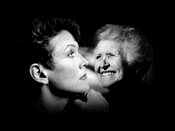| THE
ATTITUDE: Acceptance
of Aging as an Ascending Passage
Aging
beautifully means that the power of the mind, heart, and spirit are
rising. The growth and evolution of the inner life may be the special
opportunity of aging. Because of this, we may think of aging as an
ascending passage, not a descending state.
Monsignor
Fahey, past director of Fordham's Third Age Center speaks of the opportunities
of the third age experienced after age 60. He maintains that the first
age is from birth to 25 years. During this age we concentrate on biological
development, learning, and survival. The second age is 25-60 where
the overriding issues are family and productive work, applying the
lessons of the first age to social and professional responsibilities.
The third age is a less pressured more reflective period. It is a
time of emotional maturity, intellect, memories and imagination. This
is the period for giving back to society the lessons, experiences
and resources collected. People of this age should be a living bridge
between yesterday, today and tomorrow. Older people should be the
glue of society, not its ashes.
| A
personal note from Cynthia
Leibrock on the power of giving back…
I
have a brother with schizophrenia. When he was a teenager, he
became a different person within a two week period of time.
He is now is his sixties, and we have not had him completely back since
that time. He functions quite well with the wonderful medications
available today. He lives independently in his own apartment,
works part time in my business (and in a sheltered workshop),
sings in his church choir, and
delivers for Meals on Wheels.
He has done well because he has had tremendous family support
and lots of prayer. But like many disabled and elderly people,
he has been inappropriately housed in state institutions and
nursing homes. Each time it took him several years to recover
from the blow of these experiences. Finally, a residential treatment
center was built in our neighborhood with house parents. He
can now be stabilized in several weeks, rather than several
years.
This
is the power of design. Products and environments create people
with disabilities or empower them. People are not disabled by
their physical or mental differences; we all have physical and
mental differences. We are only disabled when we can't do what
we want to do. Designers have the power to make this difference,
the choice to empower or disable by design.
Designers
also have the creative skills to integrate the technology and
it's users or to segregate by design. It's not O.K. to place
disabled people in institutions, to segregate people in wheelchairs
to ramps or separate bathrooms, or to force older people to
live in healthcare facilities. We have the technology to prevent
this, but it is all too easy to design products and projects
which become emblems of age and disability providing a "separate
but equal" approach. Designers must use their creative
skills to universally design products and projects which accommodate
all users, not just those of average size and ability.
In
doing so, designers can make an enormous contribution. By designing
universally, they can leave a design legacy that will continue
to contribute for decades after they are gone.
|
Buy
a book on universal design and housing choices for older
people. All proceeds are donated to Rehabitat.
|

